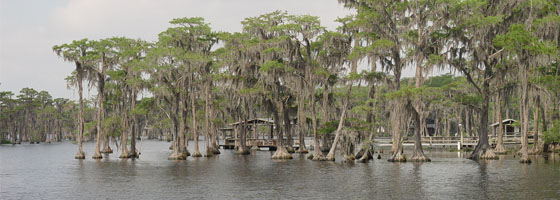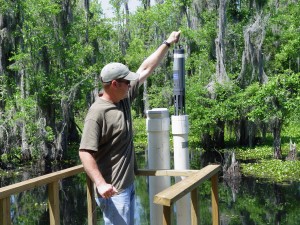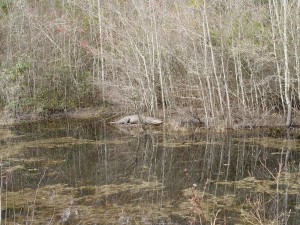Group effort manages 18,000 acre Georgia wetland complex

It’s rare that more than one entity involved in a wetland wants to maintain its natural state. So the Grand Bay and Banks Lake wetland complex in south Georgia can consider itself extremely lucky to have six organizations looking out for its best interest. The 18,000 acre complex consisting of seven large, loosely connected wetlands is co-owned by Moody Air Force Base, the Georgia Department of Natural Resources, Grand Bay Wildlife Management Area, U.S. Fish and Wildlife Service, Banks Lake National Wildlife Refuge and The Nature Conservancy.
In 2005, after a report by The Nature Conservancy revealed that the rapidly growing local population was impairing the wetlands, the U.S. Department of Defense issued a Legacy Grant to spearhead a management plan for wetlands owned by Moody Air Force Base. This included developing a better understanding of the hydrology and ecology as well as a map of the current and historic vegetation within the wetlands. According to The Nature Conservancy, the wetland system is home to a number of endangered and rare species including longleaf pine, wiregrass, Bachman’s sparrow, gopher tortoise and many water fowl.
 Moody Air Force Base has some emergency vehicle trails through the complex for rapid deployment, but the base is interested in keeping the wetlands natural. They consulted the Joseph W. Jones Ecological Research Center in Newton, Ga. for a water quality evaluation.
Moody Air Force Base has some emergency vehicle trails through the complex for rapid deployment, but the base is interested in keeping the wetlands natural. They consulted the Joseph W. Jones Ecological Research Center in Newton, Ga. for a water quality evaluation.
“It’s honorable on their part to want to understand the water quality and how their activities and how other activities around these wetlands may be impacting the quality of the wetlands,” said Woody Hicks, Jones Center hydrologist. “It’s part to their advantage and it’s also being a good steward and neighbor.”
Hicks and Brian Clayton, Jones Center monitoring technician, installed monitoring platforms throughout the complex. YSI 6600EDS VS sondes measure temperature, dissolved oxygen, specific conductivity, pH, and turbidity and OTT Thalimedes sensors measure surface water level. Their water quality information was included in the final report of the grant-funded project compiled by The Nature Conservancy.
After the grant expired in 2006, Moody AFB continued to fund monitoring of the wetlands. The Jones Center provides a yearly report of wetland quality and any changes in water quality or ecology..
“It’s essentially been a discovery project in the beginning and now it’s a long-term monitoring project,” Hicks said.
 The monitoring will keep a finger on the pulse of a thriving wetland complex that reaches far beyond the air force base. The complex facilitates a wide array of activities including fishing and water recreation in the section maintained by the U.S. Fish and Wildlife service. The Banks Lake area includes a deep water wetland where public fishing is permitted.
The monitoring will keep a finger on the pulse of a thriving wetland complex that reaches far beyond the air force base. The complex facilitates a wide array of activities including fishing and water recreation in the section maintained by the U.S. Fish and Wildlife service. The Banks Lake area includes a deep water wetland where public fishing is permitted.
The Grand Bay area houses a wetland education center that is booked nearly every day by school groups, Hicks said. Visitors can walk across the half-mile boardwalk and view the wetlands from a 54-foot observation platform. The education center also includes a natural history museum that provides information about rare local species including bald eagles, peregrine falcons and sandhill cranes.
Hicks said the wetlands are in good condition – something rarely heard in the hydrological world.
“They are carefully maintained and controlled because of their various conservation interests to the organizations that own them,” Hicks said. “All of the partners are eager to keep the wetland healthy.”





0 comments